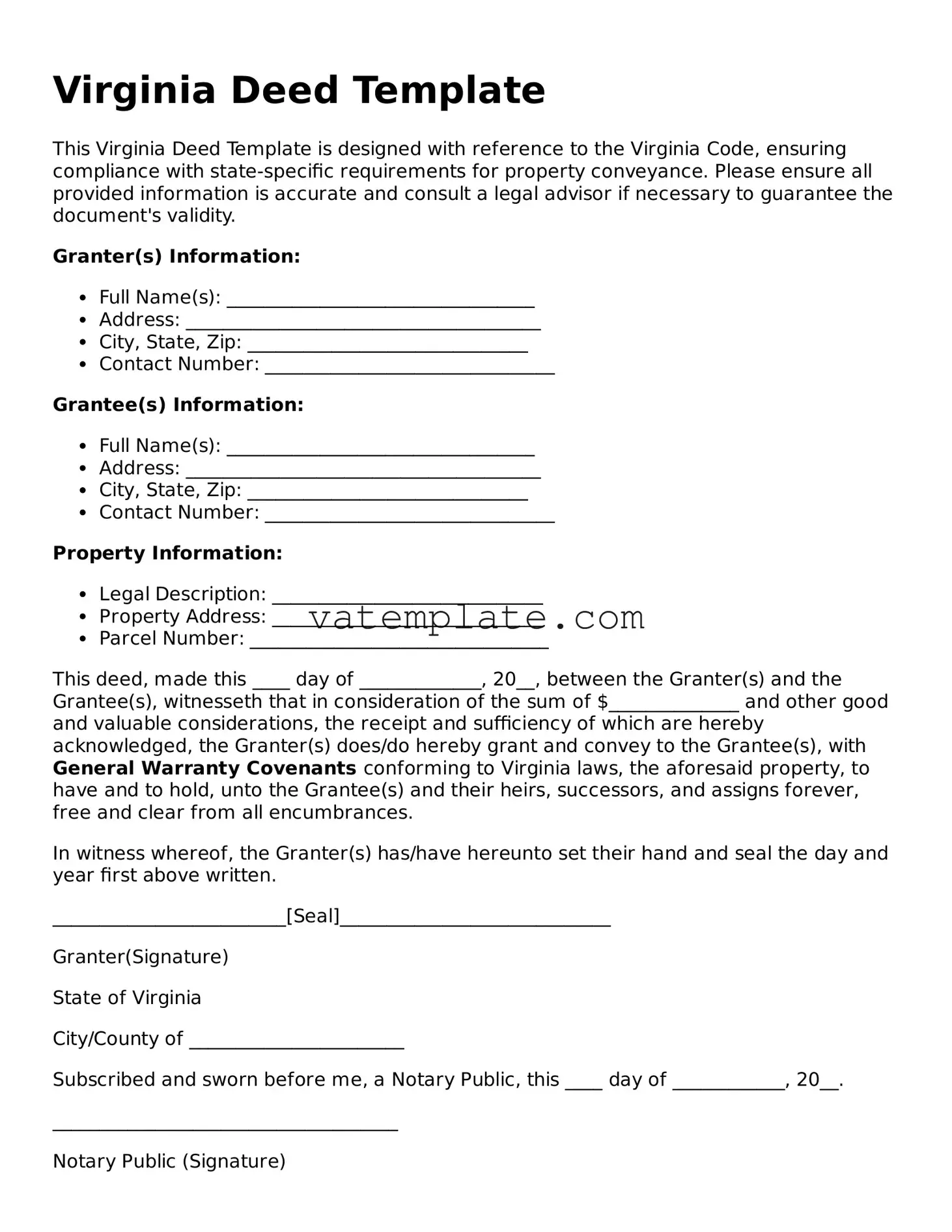Virginia Deed Template
This Virginia Deed Template is designed with reference to the Virginia Code, ensuring compliance with state-specific requirements for property conveyance. Please ensure all provided information is accurate and consult a legal advisor if necessary to guarantee the document's validity.
Granter(s) Information:
- Full Name(s): _________________________________
- Address: ______________________________________
- City, State, Zip: ______________________________
- Contact Number: _______________________________
Grantee(s) Information:
- Full Name(s): _________________________________
- Address: ______________________________________
- City, State, Zip: ______________________________
- Contact Number: _______________________________
Property Information:
- Legal Description: _____________________________
- Property Address: _____________________________
- Parcel Number: ________________________________
This deed, made this ____ day of _____________, 20__, between the Granter(s) and the Grantee(s), witnesseth that in consideration of the sum of $______________ and other good and valuable considerations, the receipt and sufficiency of which are hereby acknowledged, the Granter(s) does/do hereby grant and convey to the Grantee(s), with General Warranty Covenants conforming to Virginia laws, the aforesaid property, to have and to hold, unto the Grantee(s) and their heirs, successors, and assigns forever, free and clear from all encumbrances.
In witness whereof, the Granter(s) has/have hereunto set their hand and seal the day and year first above written.
_________________________[Seal]_____________________________
Granter(Signature)
State of Virginia
City/County of _______________________
Subscribed and sworn before me, a Notary Public, this ____ day of ____________, 20__.
_____________________________________
Notary Public (Signature)
My Commission Expires: _______________
